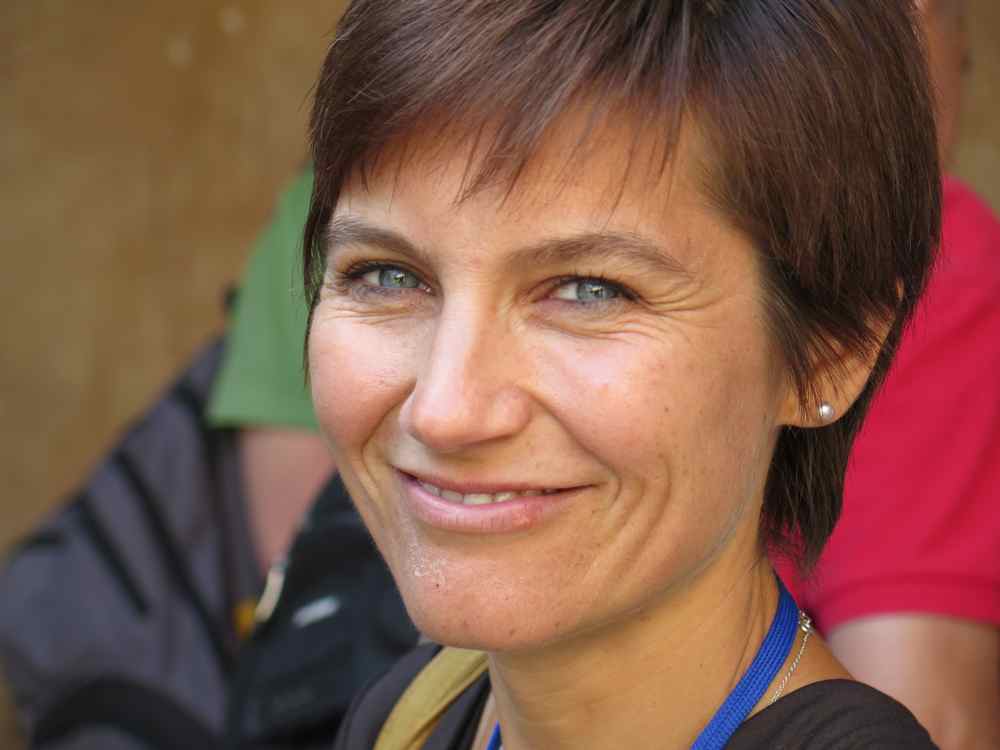Studying at the University of Verona
Here you can find information on the organisational aspects of the Programme, lecture timetables, learning activities and useful contact details for your time at the University, from enrolment to graduation.
Academic calendar
The academic calendar shows the deadlines and scheduled events that are relevant to students, teaching and technical-administrative staff of the University. Public holidays and University closures are also indicated. The academic year normally begins on 1 October each year and ends on 30 September of the following year.
Course calendar
The Academic Calendar sets out the degree programme lecture and exam timetables, as well as the relevant university closure dates..
| Period | From | To |
|---|---|---|
| I semestre | Oct 3, 2011 | Jan 31, 2012 |
| II semestre | Mar 1, 2012 | Jun 15, 2012 |
| Session | From | To |
|---|---|---|
| Sessione straordinaria | Feb 1, 2012 | Feb 29, 2012 |
| Sessione estiva | Jun 18, 2012 | Jul 31, 2012 |
| Sessione autunnale | Sep 3, 2012 | Sep 28, 2012 |
| Session | From | To |
|---|---|---|
| Sessione autunnale | Oct 18, 2011 | Oct 18, 2011 |
| Sessione straordinaria | Dec 14, 2011 | Dec 14, 2011 |
| Sessione invernale | Mar 20, 2012 | Mar 20, 2012 |
| Sessione estiva | Jul 23, 2012 | Jul 23, 2012 |
| Period | From | To |
|---|---|---|
| Festa di Ognissanti | Nov 1, 2011 | Nov 1, 2011 |
| Festa dell'Immacolata Concezione | Dec 8, 2011 | Dec 8, 2011 |
| Vacanze Natalizie | Dec 22, 2011 | Jan 6, 2012 |
| Vacanze Pasquali | Apr 5, 2012 | Apr 10, 2012 |
| Festa della Liberazione | Apr 25, 2012 | Apr 25, 2012 |
| Festa del Lavoro | May 1, 2012 | May 1, 2012 |
| Festa del Patrono di Verona S. Zeno | May 21, 2012 | May 21, 2012 |
| Festa della Repubblica | Jun 2, 2012 | Jun 2, 2012 |
| Vacanze estive | Aug 8, 2012 | Aug 15, 2012 |
Exam calendar
Exam dates and rounds are managed by the relevant Science and Engineering Teaching and Student Services Unit.
To view all the exam sessions available, please use the Exam dashboard on ESSE3.
If you forgot your login details or have problems logging in, please contact the relevant IT HelpDesk, or check the login details recovery web page.
Should you have any doubts or questions, please check the Enrollment FAQs
Academic staff
 alberto.benvegnu@univr.it
alberto.benvegnu@univr.it
 alejando.cuneo@univr.it
alejando.cuneo@univr.it
 massimo.guerriero@univr.it
massimo.guerriero@univr.it

Magazzini Laura
 laura.magazzini@univr.it
laura.magazzini@univr.it
 045 8028525
045 8028525
 gino.mariotto@univr.it
gino.mariotto@univr.it
 martina.menon@univr.it
martina.menon@univr.it

Residori Stefania
 stefania.residori@univr.it
stefania.residori@univr.it

Squassina Marco
 marco.squassina@univr.it
marco.squassina@univr.it
 +39 045 802 7913
+39 045 802 7913
 simone.zuccher@univr.it
simone.zuccher@univr.it
Study Plan
The Study Plan includes all modules, teaching and learning activities that each student will need to undertake during their time at the University.
Please select your Study Plan based on your enrollment year.
1° Year
| Modules | Credits | TAF | SSD |
|---|
2° Year activated in the A.Y. 2012/2013
| Modules | Credits | TAF | SSD |
|---|
3° Year activated in the A.Y. 2013/2014
| Modules | Credits | TAF | SSD |
|---|
| Modules | Credits | TAF | SSD |
|---|
| Modules | Credits | TAF | SSD |
|---|
| Modules | Credits | TAF | SSD |
|---|
| Modules | Credits | TAF | SSD |
|---|
Legend | Type of training activity (TTA)
TAF (Type of Educational Activity) All courses and activities are classified into different types of educational activities, indicated by a letter.
Stochastic systems (2013/2014)
Teaching code
4S00254
Credits
6
Language
Italian
Scientific Disciplinary Sector (SSD)
MAT/06 - PROBABILITY AND STATISTICS
The teaching is organized as follows:
Catene di Markov in tempo discreto
Analisi di serie temporali
Esercitazioni
Learning outcomes
Module 1 ( Discrete time Markov Chains )
Basics of the theory of discrete time Markov chain with finite or countable state space and examples of application.
Module 2 (Practice session of Stochastic systems)
Approximation and computation of invariant probabilities, Metropolis algorithm, simulation of queues and renewal processes with the use of Matlab.
Module 3 Introduction to Time Series analysis: the lessons aims to provide to the student a general framework to analyze time series as the outcome of a discrete time model fed by a white noise and an exogenous input. The lesson are completed by the use of a dedicated software in order to apply the theoretical aspects.
Program
Module 1
Markov chains with finite space state:
Definitions, transition matrix, transition probability in n steps, Chapman -Kolmogorov equation, finite joint densities, Canonocal space and Kolmogorov theorem (without proof).
State classification, invariant probabilities, Markov-Kakutani theorem, example of gambler's ruin, regular chains, criterion, limit probabilities and Markov theorem, reversible chains, Metropolis algorithm and Simulated annealing, numerical generation of a discrete random variable and algorithm for generation an omogeneus Markov chains with finite state space.
Markov chains with countable space state:
Equivalent definitions of transient and recurrent state, positive recurrence, periodicity, solidarity property, canonical decomposition of the state space, invariant measures, existence theorem, example of the unlimited random walk. Ergodicity and limit theorems.
Elements of Martingales associated to discrete time Markov chains:
Natural filtration, stopping times, conditional expectation given a random variable, strong Markov property, martingales. Optional stopping Theorem, example of gambler's ruin.
Module 2 Approximation and computation of invariant probabilities, Metropolis algorithm, simulation of queues with the use of Matlab.
Module 3 Elements of time series analysis :
Main scope of time series analysis: modelling, prediction and simulation.
Identification problem main components: a priori Knowledge, experiment design, goodness criteria, model, filtering and validation.
Model: main variables and correspondent schema. (AR, ARX, ARMA, output-error).
Goodness Criteria: least square, Maximum Likelihood, Maximum a posteriori.
Filtering: Linear parameter model, frequency filtering.
Matlab : main purpose and examples.
Bibliography
| Activity | Author | Title | Publishing house | Year | ISBN | Notes |
|---|---|---|---|---|---|---|
| Analisi di serie temporali | LJung | System Identification, Theory for the User (Edizione 2) | Prentice Hall PTR | 1999 |
Examination Methods
Module 1 Oral exam
Module 2 Discussion of the solution of given homeworks.
Module 3 Written exam
Teaching materials e documents
-

 Elaborato 1 - appello del 5 febbraio
(it, 54 KB, 30/01/14)
Elaborato 1 - appello del 5 febbraio
(it, 54 KB, 30/01/14)
-

 Elaborato 2 - testo e linee guida per l'appello del 19 febbraio
(it, 75 KB, 13/02/14)
Elaborato 2 - testo e linee guida per l'appello del 19 febbraio
(it, 75 KB, 13/02/14)
-

 Elaborato 3 - testo e linee guida per l'appello del 25 luglio
(it, 701 KB, 18/06/14)
Elaborato 3 - testo e linee guida per l'appello del 25 luglio
(it, 701 KB, 18/06/14)
-

 Errata Corrige I - Esercitazione IV
(it, 60 KB, 17/02/14)
Errata Corrige I - Esercitazione IV
(it, 60 KB, 17/02/14)
-

 Esercitazione 1 del 20-11: predizione e simulazione
(it, 1315 KB, 17/12/13)
Esercitazione 1 del 20-11: predizione e simulazione
(it, 1315 KB, 17/12/13)
-

 Esercitazione 2 del 27-11: identificazione su errore di predizione
(it, 649 KB, 17/12/13)
Esercitazione 2 del 27-11: identificazione su errore di predizione
(it, 649 KB, 17/12/13)
-

 Esercitazione 3 del 04-12: Identificazione ML e MAP
(it, 1292 KB, 17/12/13)
Esercitazione 3 del 04-12: Identificazione ML e MAP
(it, 1292 KB, 17/12/13)
-

 Esercitazione 4 del 11-12: Validazione Modelli
(it, 628 KB, 17/02/14)
Esercitazione 4 del 11-12: Validazione Modelli
(it, 628 KB, 17/02/14)
-

 Esercitazione 5 del 18-12: Simulazione d'esame
(it, 661 KB, 17/12/13)
Esercitazione 5 del 18-12: Simulazione d'esame
(it, 661 KB, 17/12/13)
Type D and Type F activities
Modules not yet included
Career prospects
Module/Programme news
News for students
There you will find information, resources and services useful during your time at the University (Student’s exam record, your study plan on ESSE3, Distance Learning courses, university email account, office forms, administrative procedures, etc.). You can log into MyUnivr with your GIA login details: only in this way will you be able to receive notification of all the notices from your teachers and your secretariat via email and soon also via the Univr app.
Graduation
Documents
| Title | Info File |
|---|---|
|
|
pdf, it, 31 KB, 29/07/21 |
|
|
pdf, it, 31 KB, 29/07/21 |
|
|
pdf, it, 171 KB, 20/03/24 |
List of theses and work experience proposals
| theses proposals | Research area |
|---|---|
| Formule di rappresentazione per gradienti generalizzati | Mathematics - Analysis |
| Formule di rappresentazione per gradienti generalizzati | Mathematics - Mathematics |
| Proposte Tesi A. Gnoatto | Various topics |
| Mathematics Bachelor and Master thesis titles | Various topics |
| THESIS_1: Sensors and Actuators for Applications in Micro-Robotics and Robotic Surgery | Various topics |
| THESIS_2: Force Feedback and Haptics in the Da Vinci Robot: study, analysis, and future perspectives | Various topics |
| THESIS_3: Cable-Driven Systems in the Da Vinci Robotic Tools: study, analysis and optimization | Various topics |
| Stage | Research area |
|---|---|
| Internship proposals for students in mathematics | Various topics |
Attendance
As stated in the Teaching Regulations for the A.Y. 2022/2023, except for specific practical or lab activities, attendance is not mandatory. Regarding these activities, please see the web page of each module for information on the number of hours that must be attended on-site.
Career management
Student login and resources
Erasmus+ and other experiences abroad
Commissione tutor
La commissione ha il compito di guidare le studentesse e gli studenti durante l'intero percorso di studi, di orientarli nella scelta dei percorsi formativi, di renderli attivamente partecipi del processo formativo e di contribuire al superamento di eventuali difficoltà individuali.
E' composta dai proff. Sisto Baldo, Marco Caliari, Francesca Mantese, Giandomenico Orlandi e Nicola Sansonetto





















